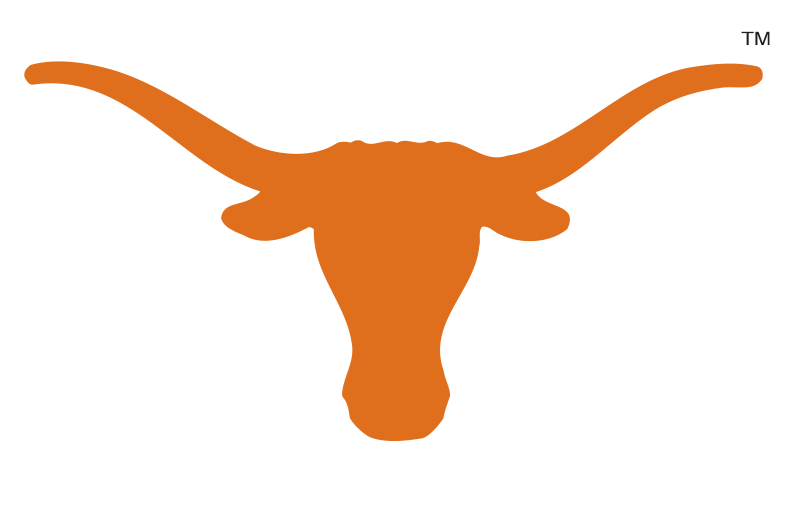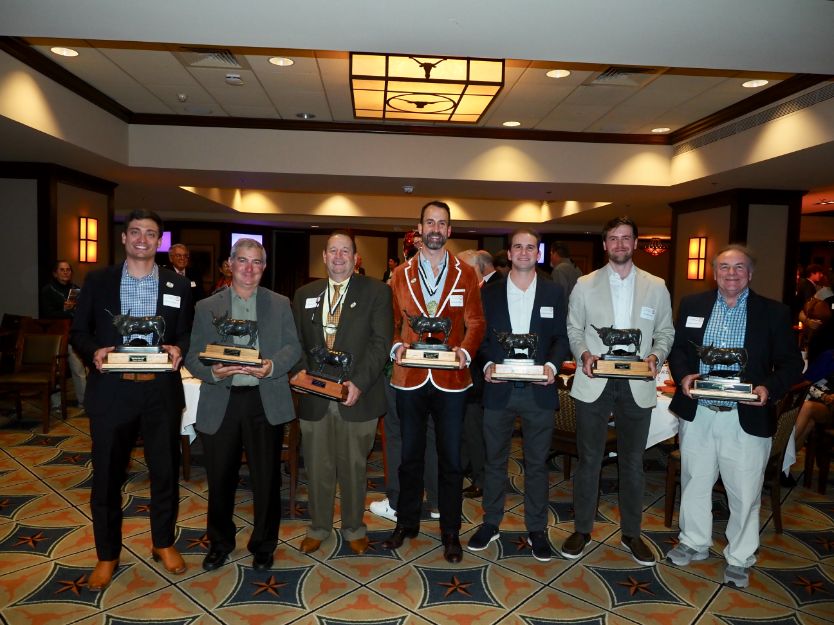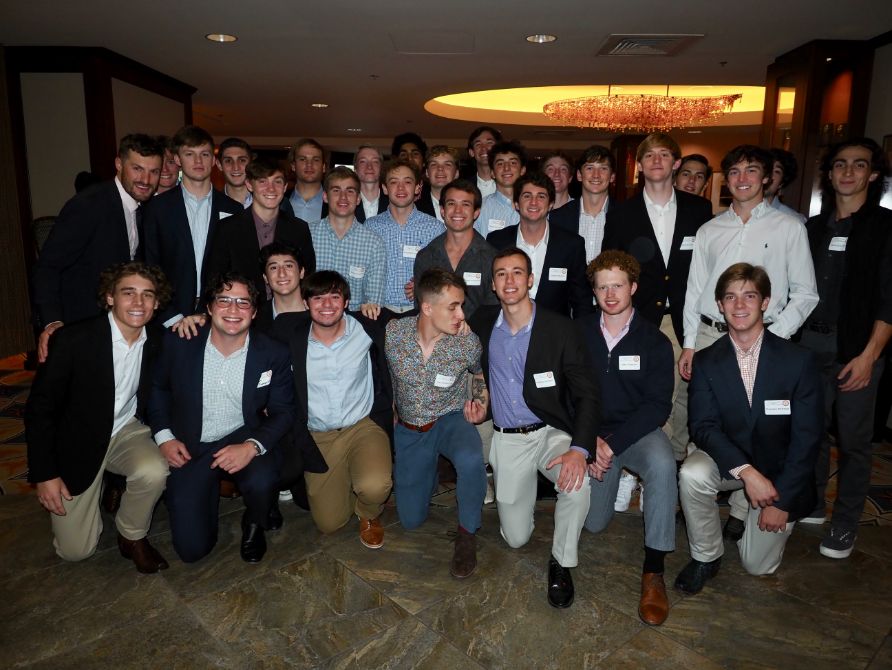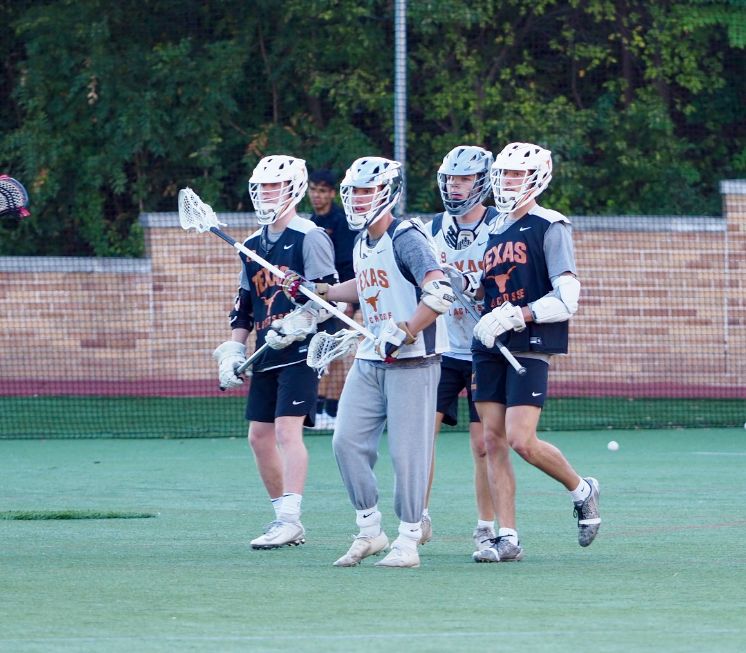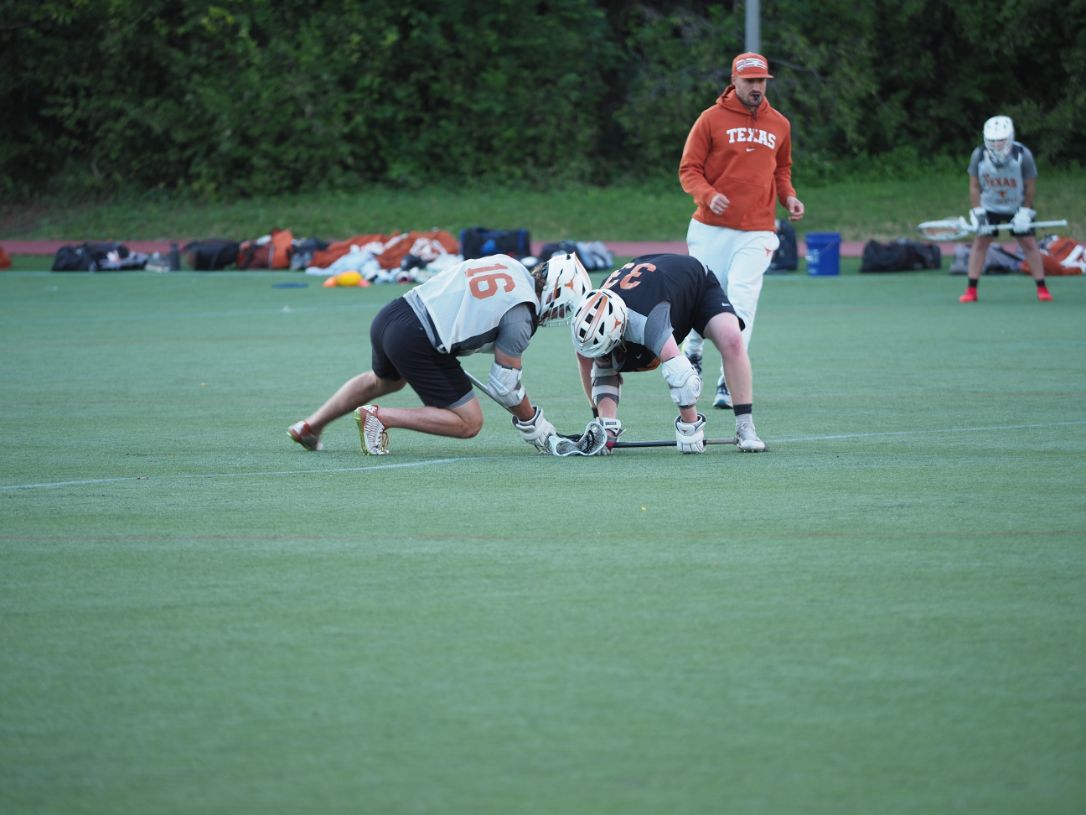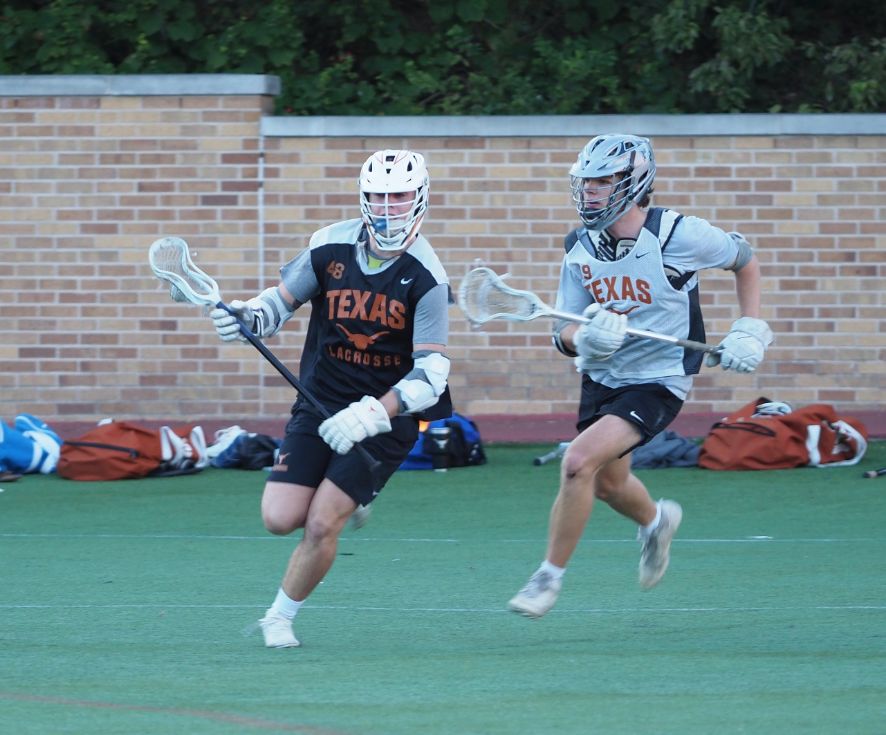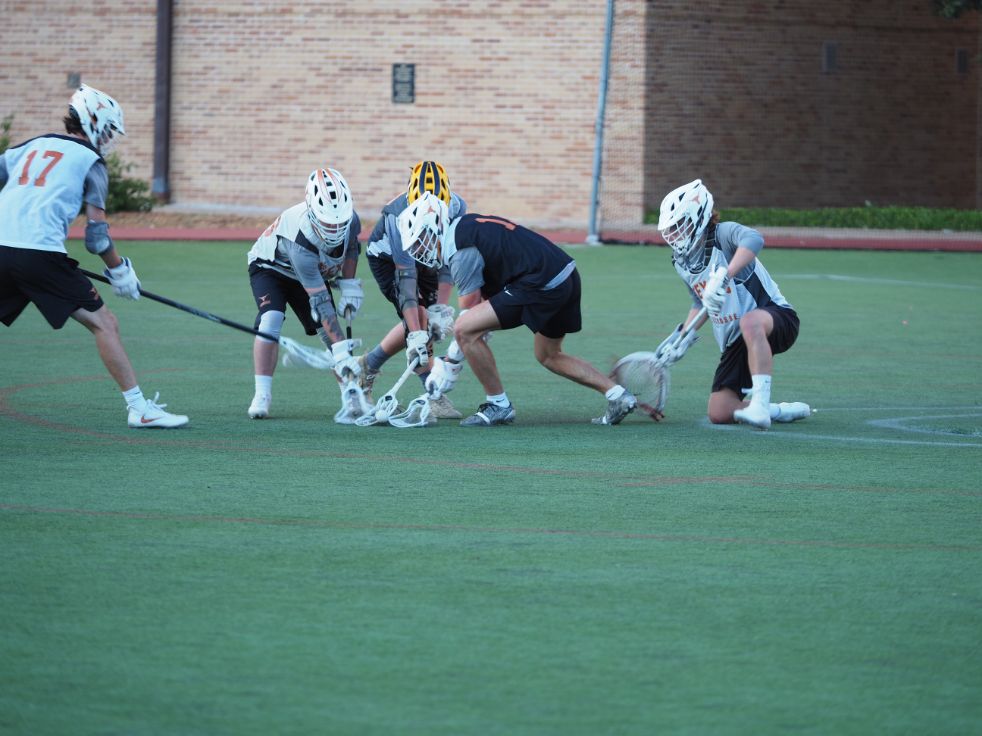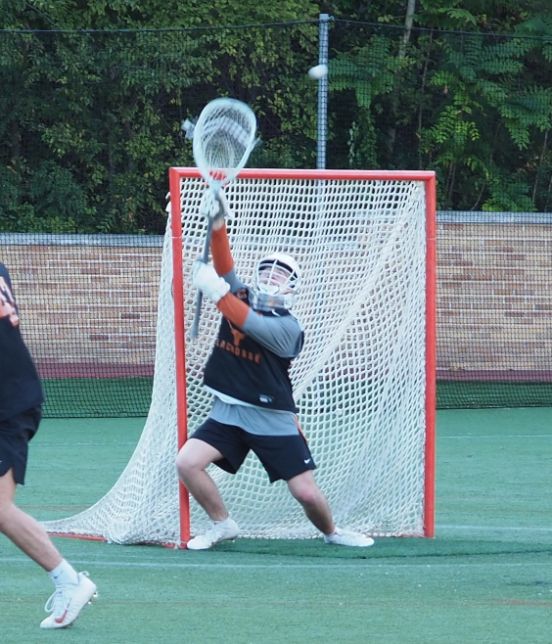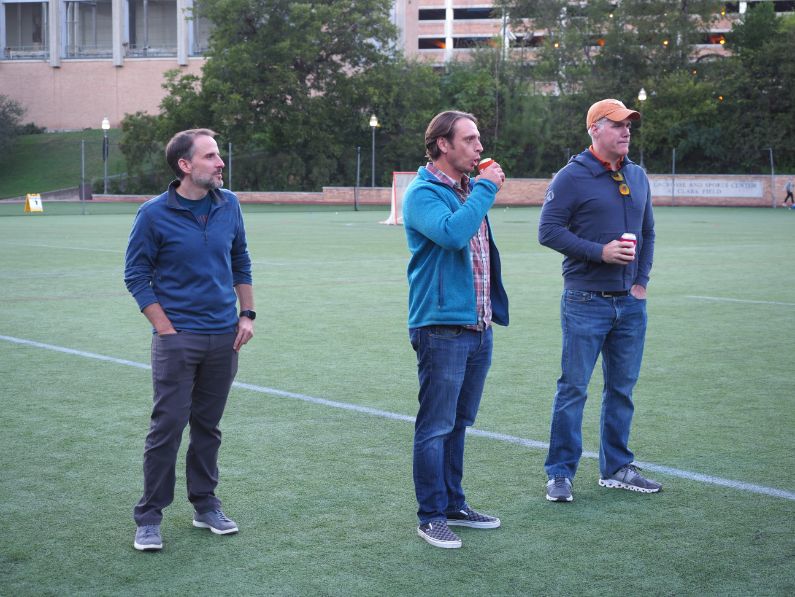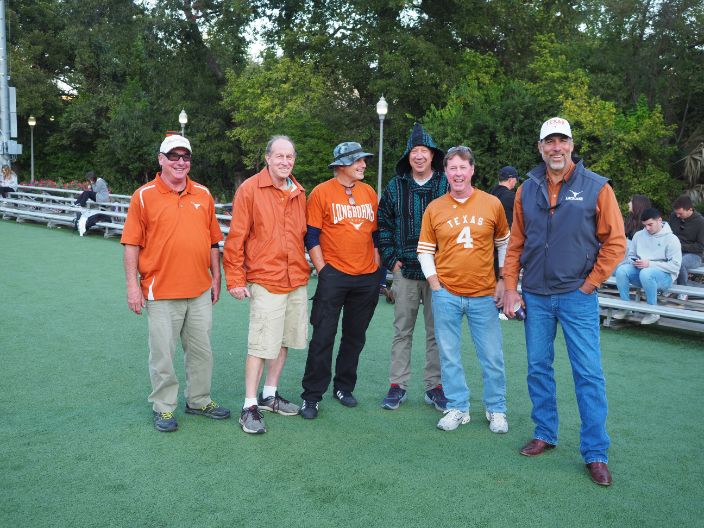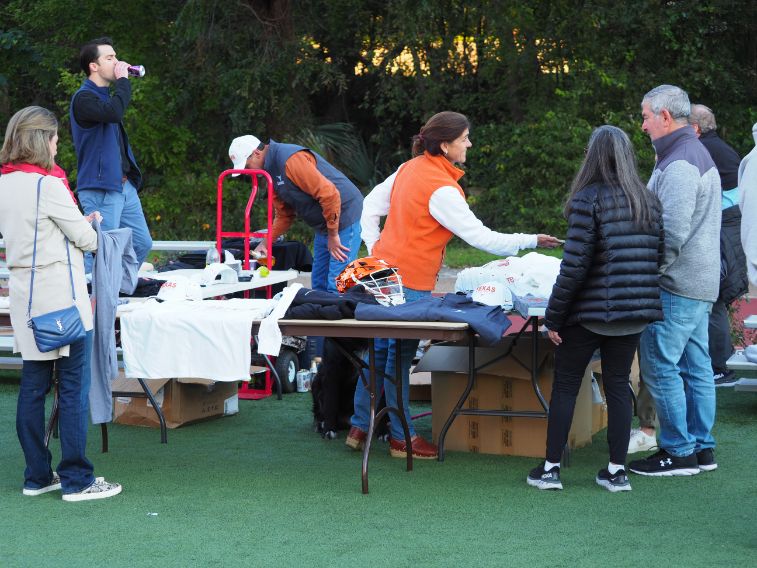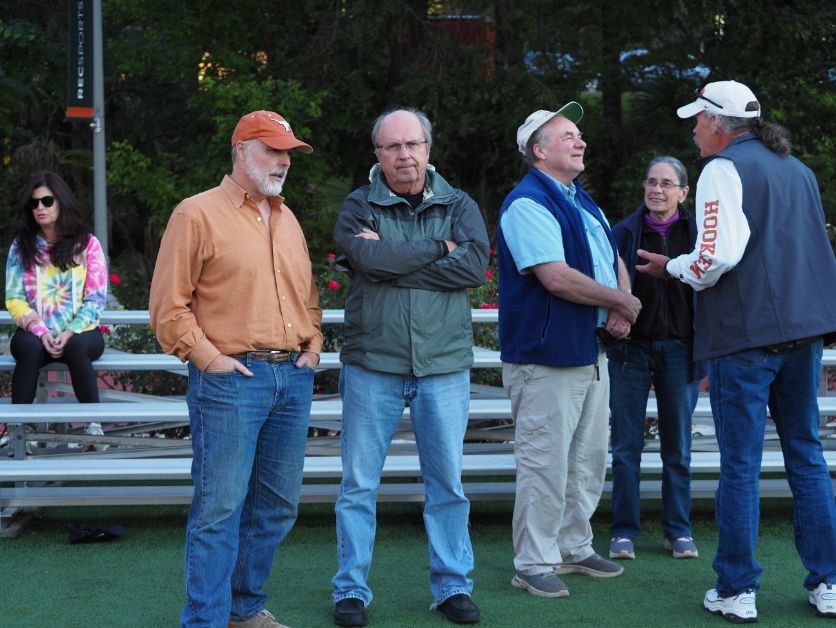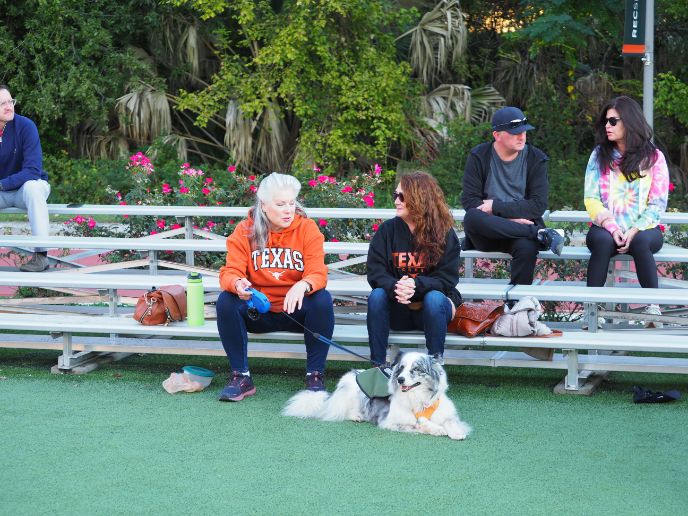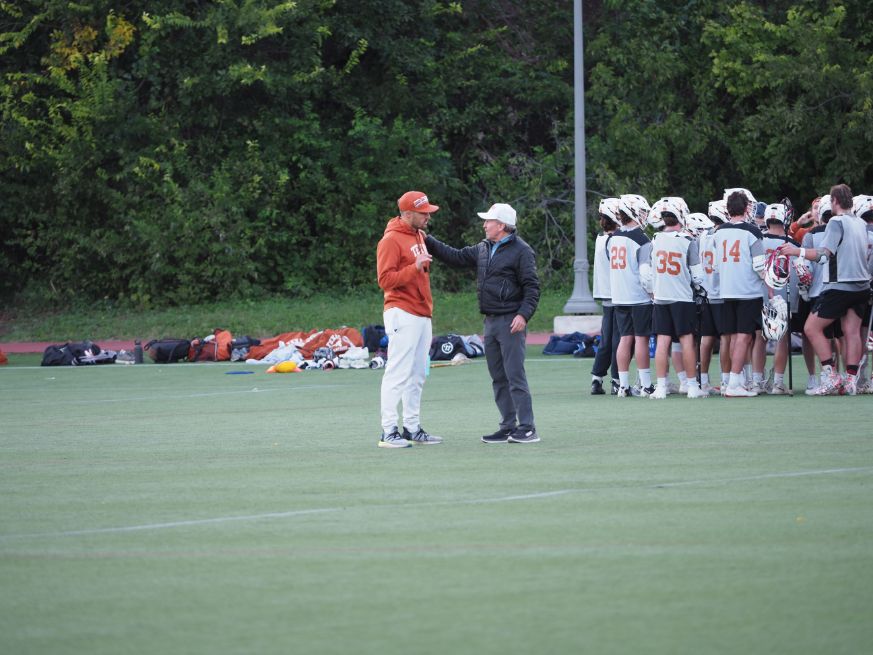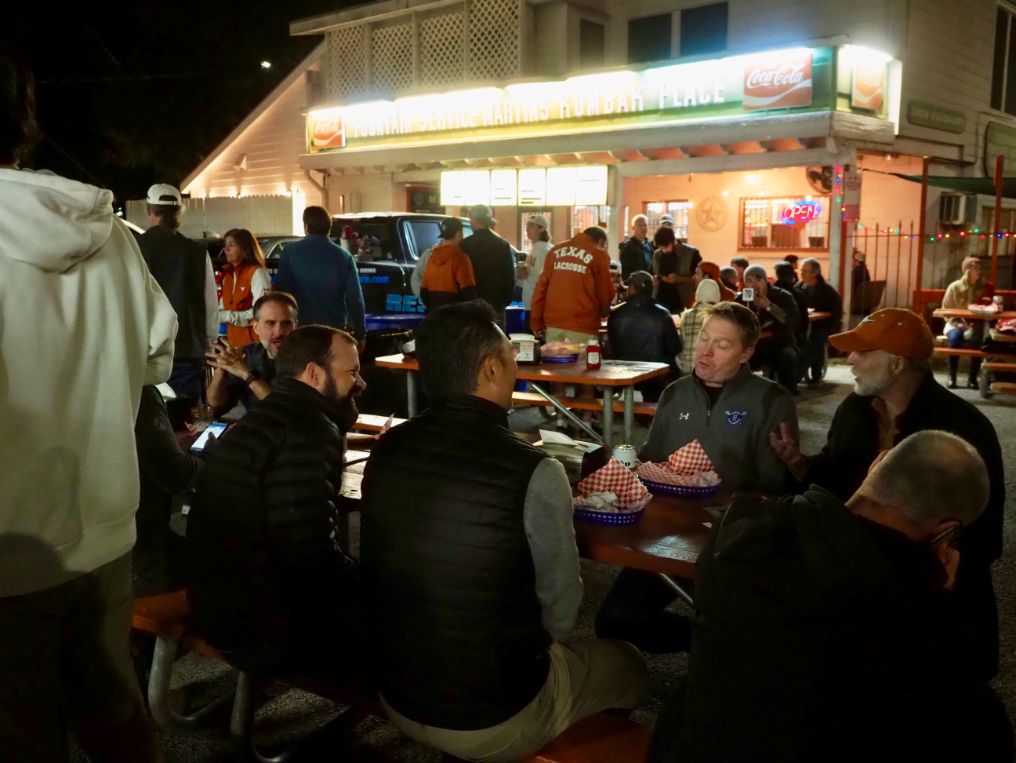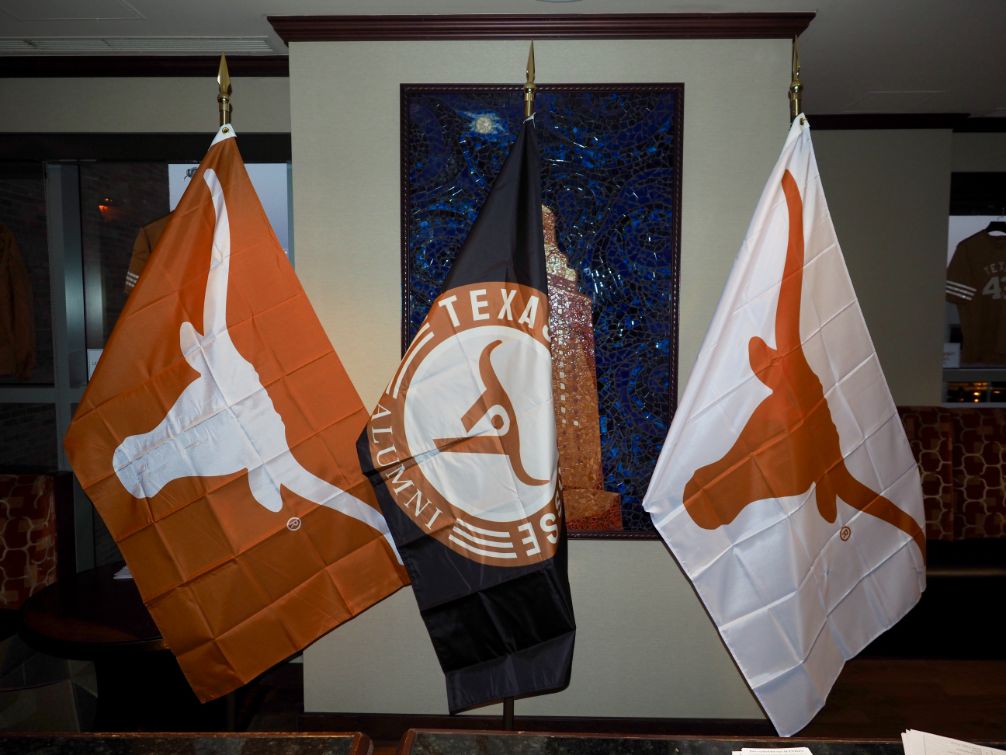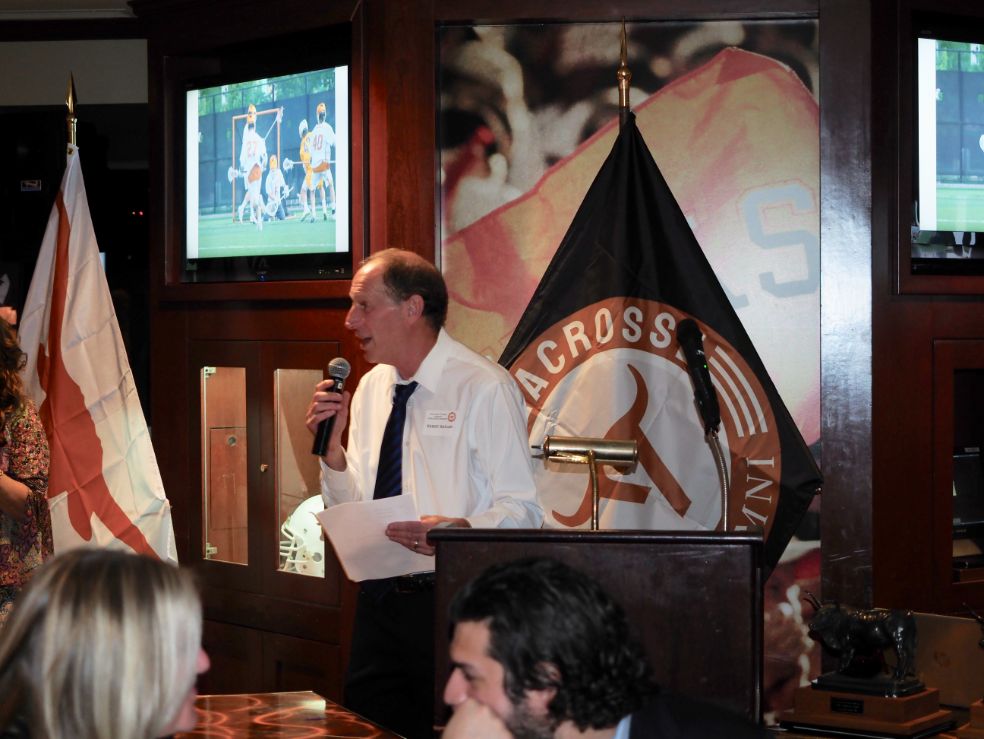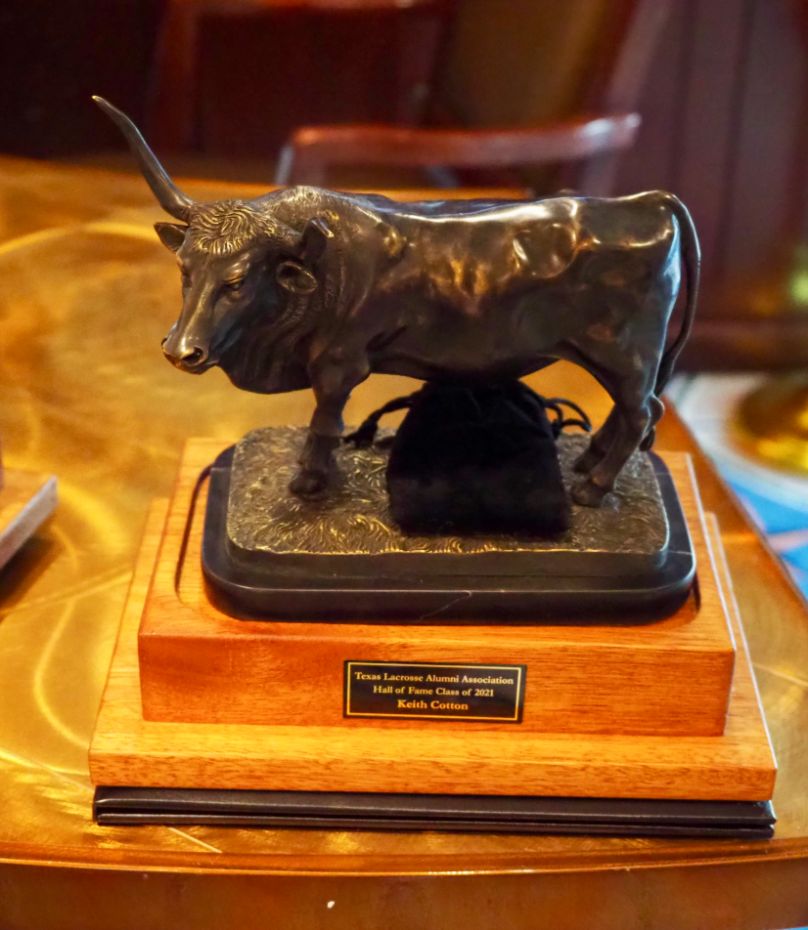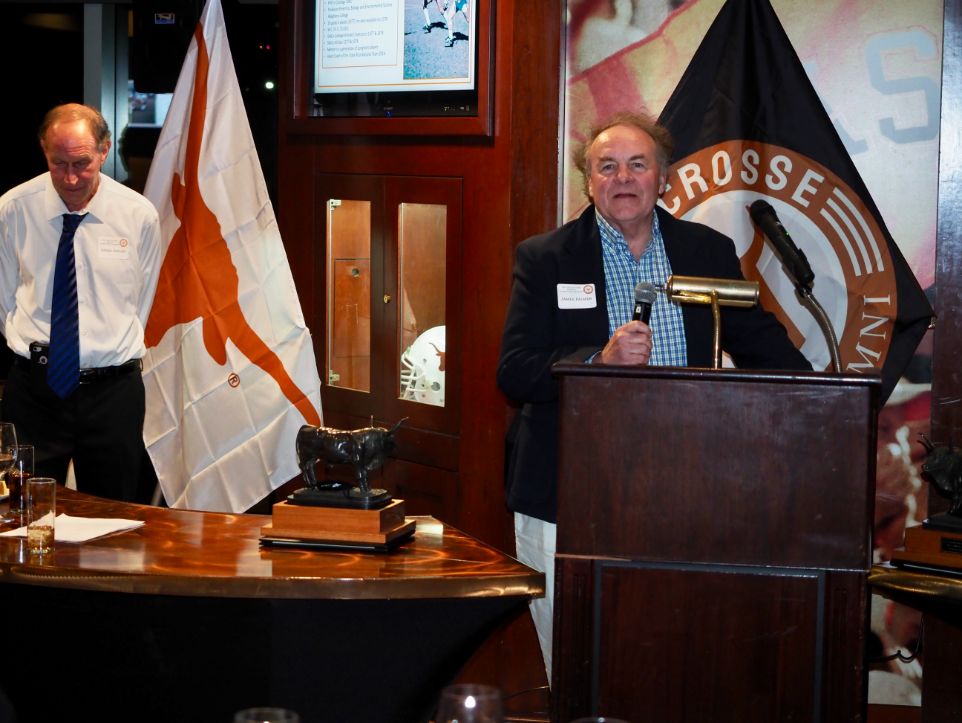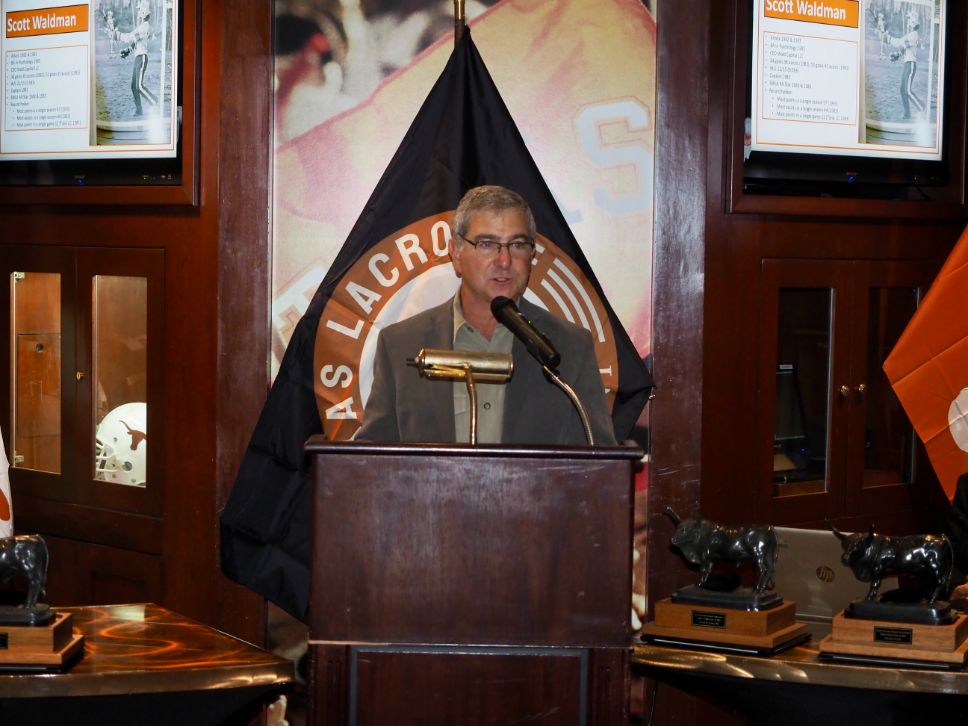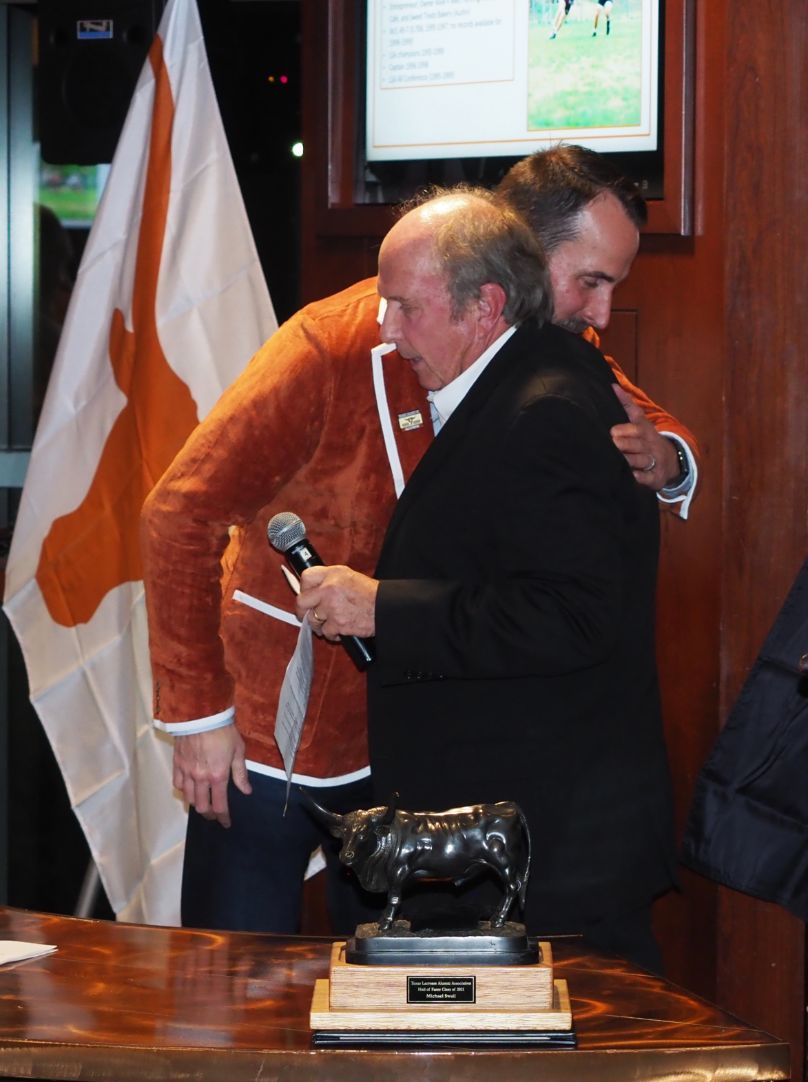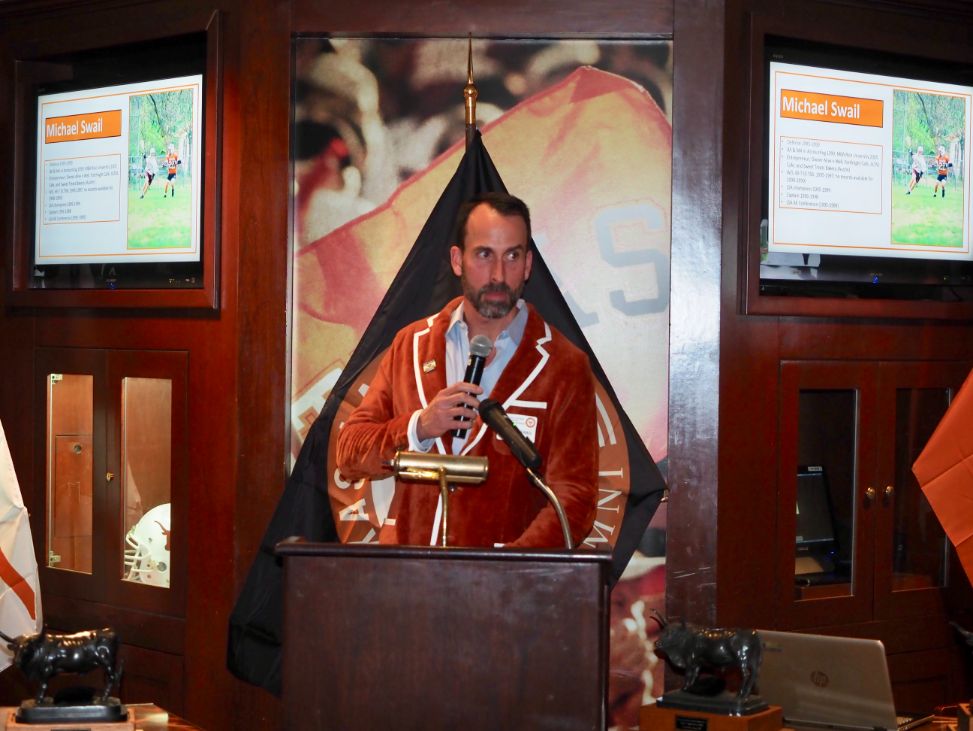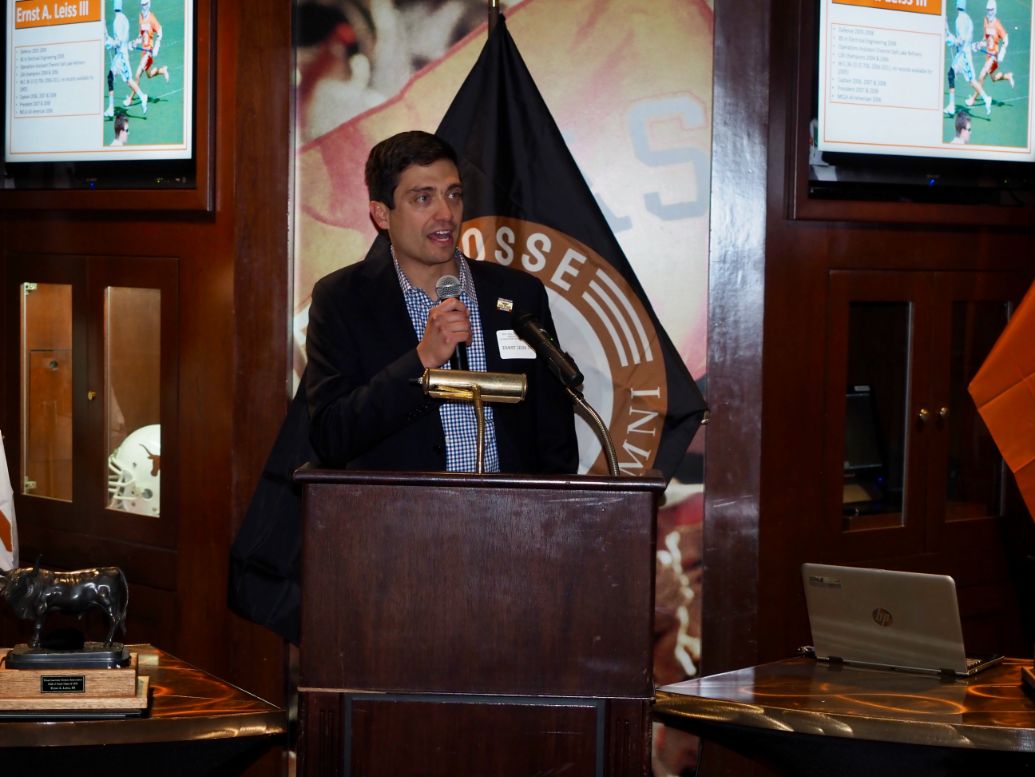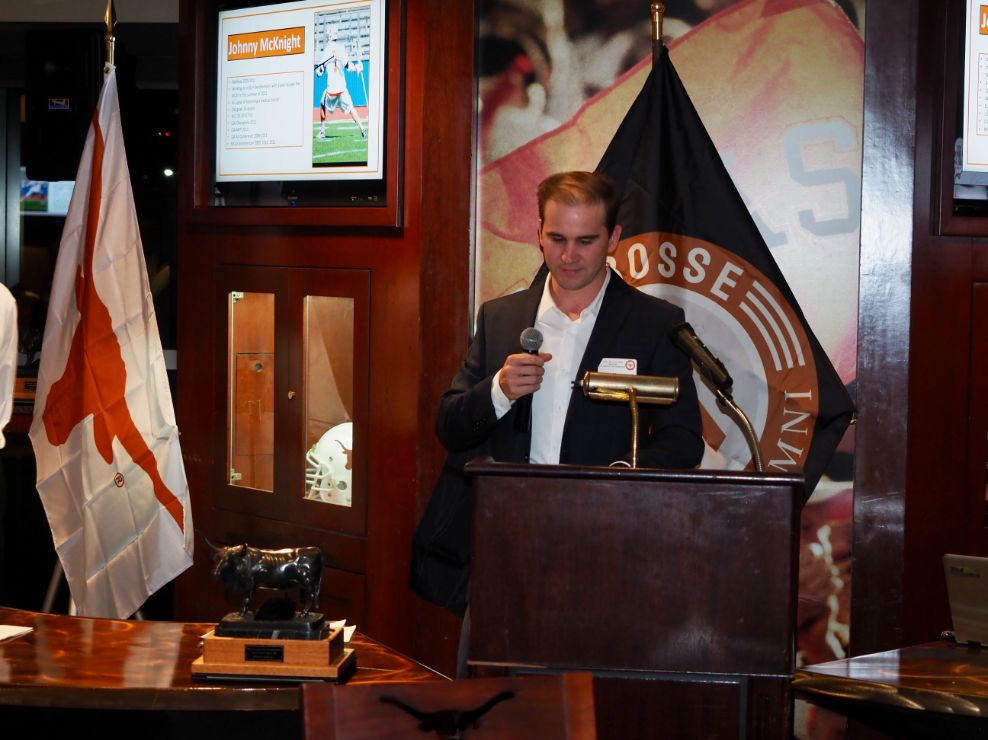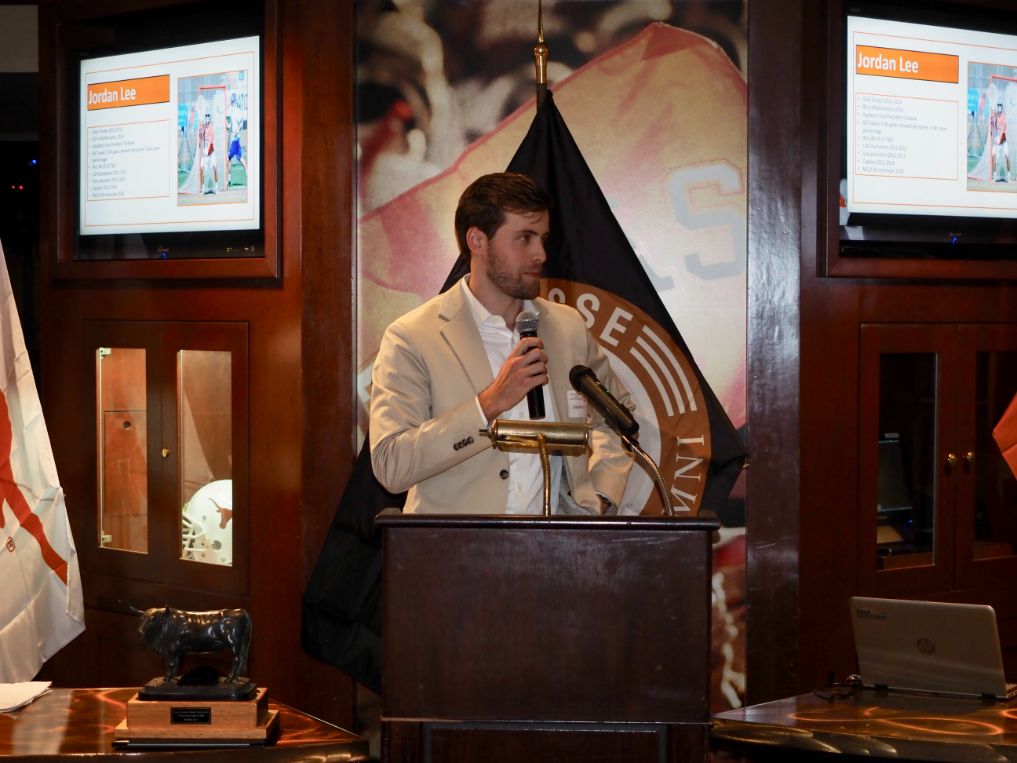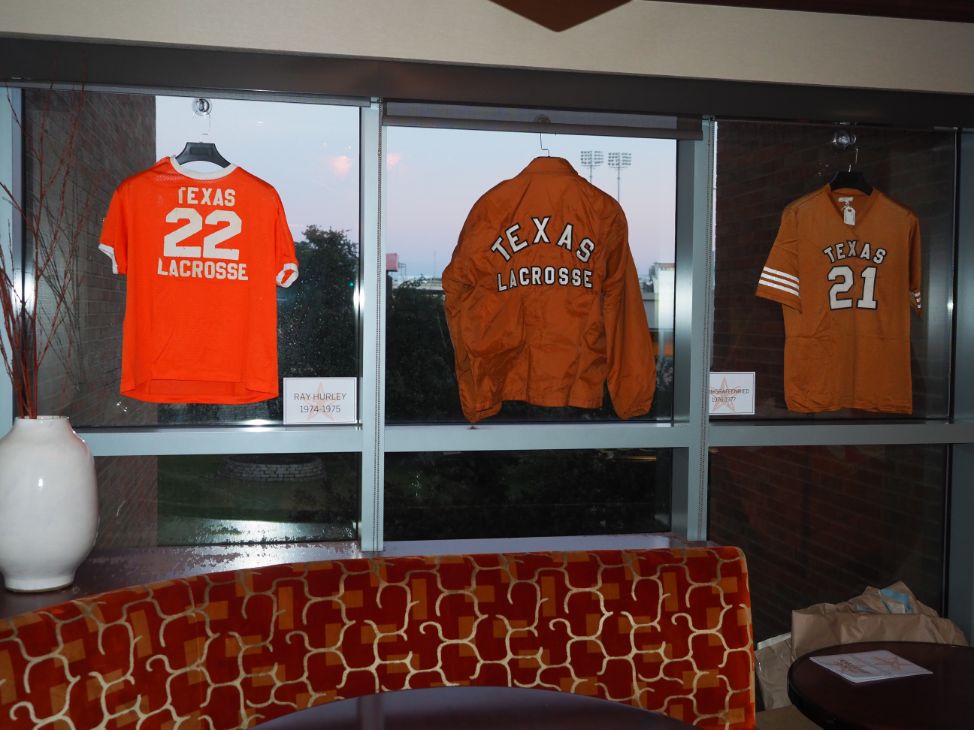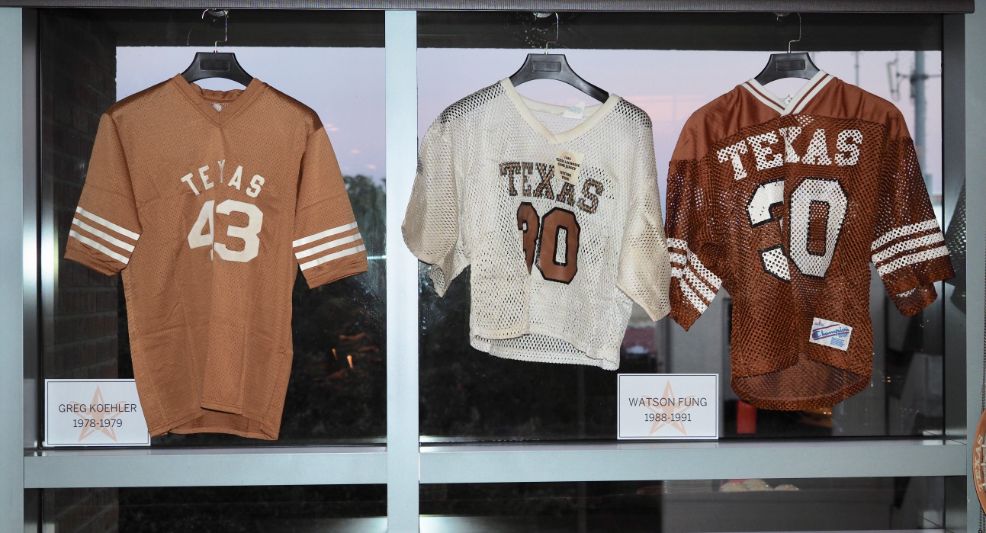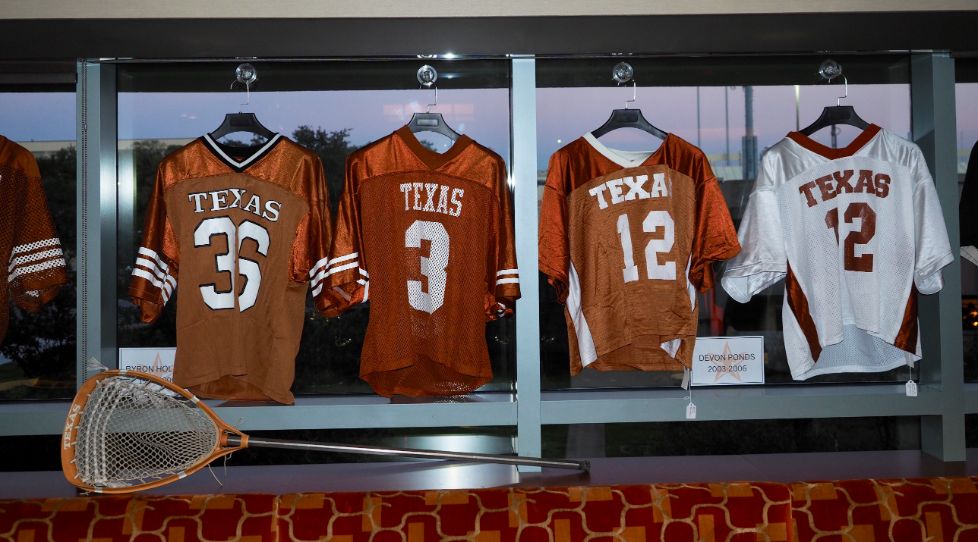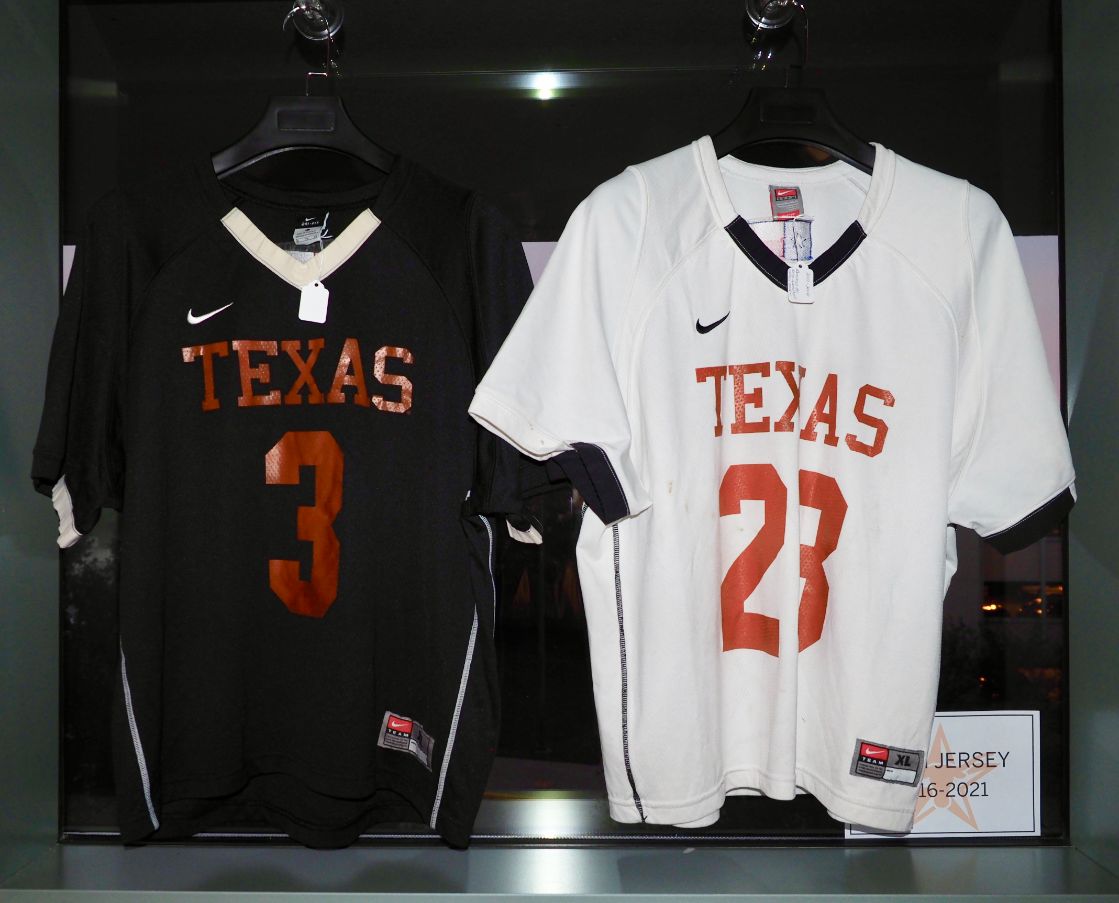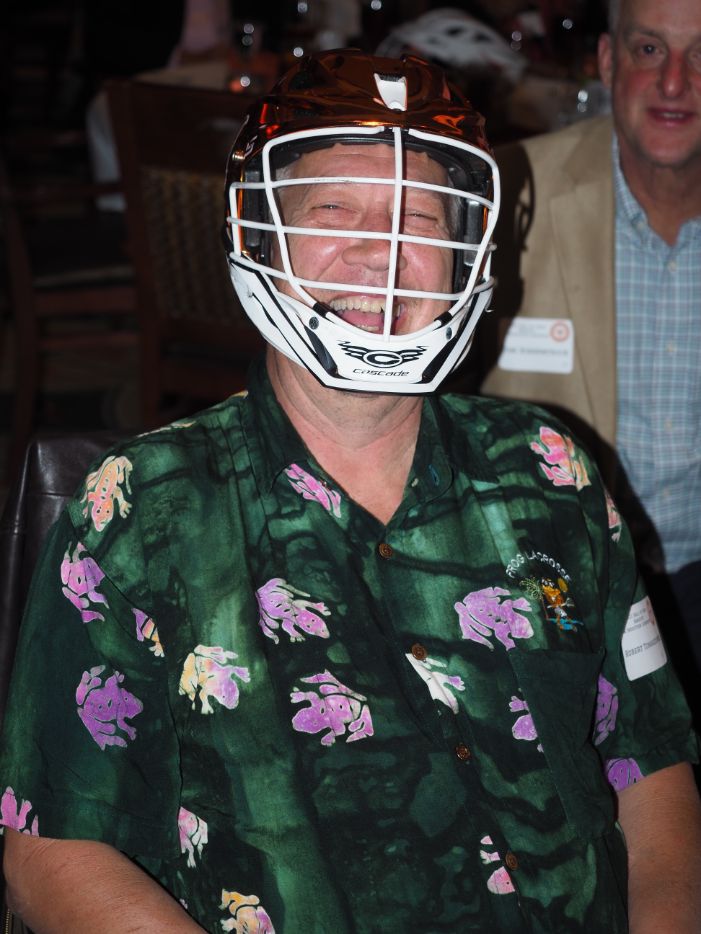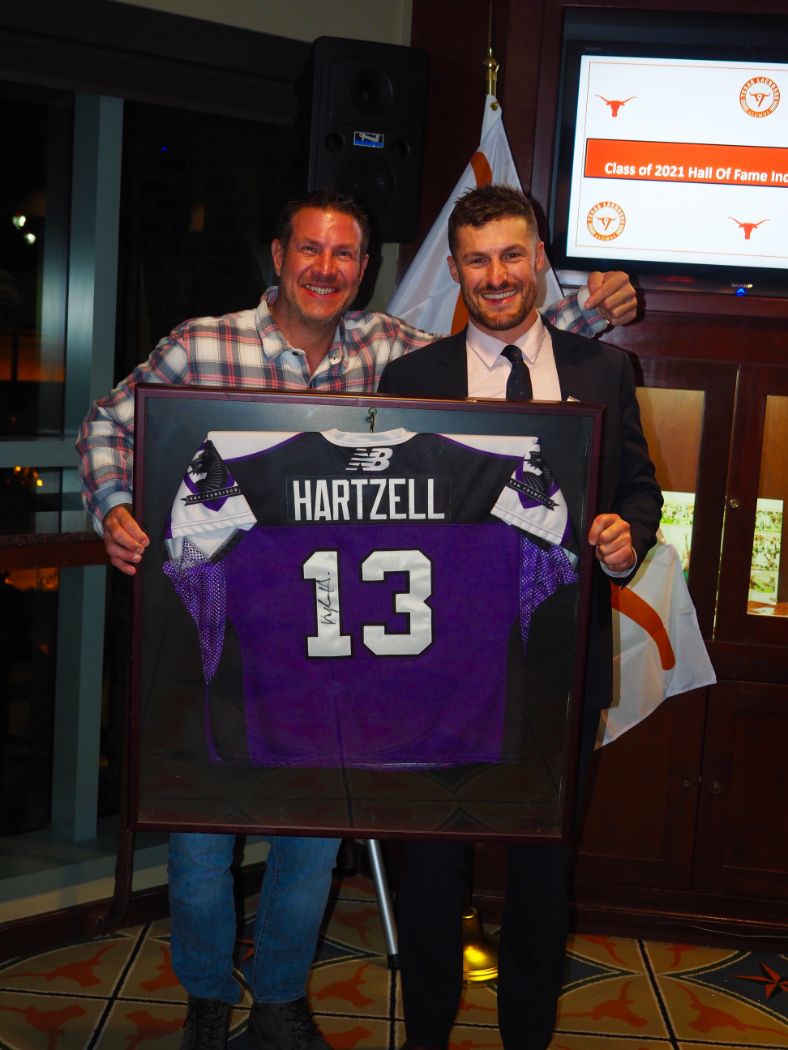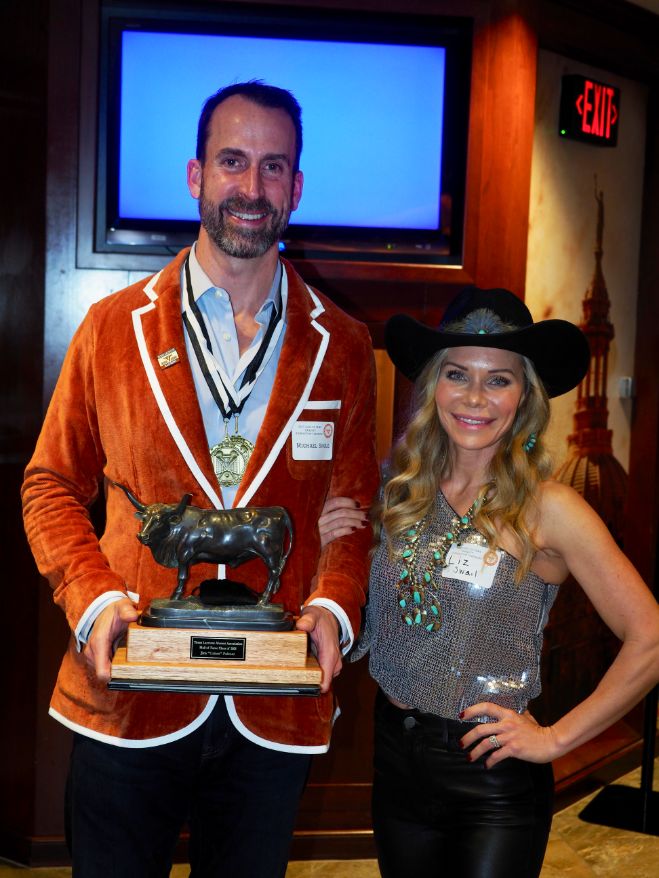History of Texas Lacrosse
In the fall of 1973 Denny Bahm traveled out of New York state and registered as a freshman at the University of Texas. He had played lacrosse as a defenseman starting his junior year in high school (Mamaroneck High School, New York) under the guidance of his coach, Ron Benizo. He arrived understanding that he wanted to continue playing the game that he had learned just a few years earlier. The need was there, but the sport was just not available.
Living in Moore Hill Dormitory he would meet Don Carnes and Bob Daigh. Carnes, a native Texan, had become familiar with lacrosse while at Cornell, but had never been involved in a game before moving to Austin. Daigh had played high school lacrosse in West Point, New York prior to attending the University of Texas. The three began recruiting athletes living in the dormitories. They would meet Kelly Anderson who had lacrosse experience and importantly a connection to the Daily Texan allowing for a wider range of advertisement with respect to creating a program.
Bahm secured $1500 in funding from Recreation Sports and went about the business of starting a team. At the time, Texas A&M had established a team and there were non-university affiliated teams in Dallas, Houston, and San Antonio. These club teams had evolved as the result of a 1971 game played in the Houston Astrodome between the Johns Hopkins Blue Jays and the US Navy Midshipmen. That game allowed a chance meeting between Bob Korba and Dave Gruber both of whom had played lacrosse in their past lives, had a deep passion for the game, and were living in Texas pursuing their education at Southern Methodist and Texas A&M Universities respectively. Teams emerged in Dallas and College Station as a result of the crossing of paths between two athletes looking for a place to play. Interestingly Bob Daigh who would matriculate to Austin in 1973 to attend school, played crease attack for that first team that formed in Dallas. He will tell you that in 1971 and 1972 he was the only high school lacrosse player in the state. Additionally, in 1972 a team was founded by Russ Beers and Dermot Riggs in Houston, and the following year (1973) Bob Richter formed a team in San Antonio. Finally, also in 1973 in neighboring Louisiana, Dr. Rix Yard started a team at Tulane University in New Orleans and Ed Kardas formed a squad at Louisiana State University in Baton Rouge. It was in this environment that Bahm, Carnes, Daigh, and Anderson found themselves and lacrosse at The University was created.
The first Longhorn game was played on March 2, 1974 against traditional rival Texas A&M--a game where the Aggies prevailed with an 11-8 win. This first season saw competition against San Antonio Lacrosse Club (LC), Dallas LC, Houston LC, and Tulane LC. A total of six games were played with Texas earning a record of 3 wins and 3 losses and closing the season by redeeming their initial loss to Texas A&M with a 13-6 win. The team fielded twenty-two gentlemen during that inaugural year and home games were played at Clark Field, a location that today houses the Caven Lacrosse and Sports Center. From that 1974 team both Denny Bahm and Don Carnes have been inducted into the University of Texas Men’s Lacrosse Hall of Fame in a ceremony that took place on April 06, 2019.
The men’s lacrosse program has gone on to compete in every year a season was available since that first game in 1974. Significant events over the years have included:
Bob Korba (referenced as a founder of one of original three teams in Texas) moved to Austin to pursue his professional career as a graphic artist in time for the start of the University fall semester in 1975. Korba would be involved as a player or a coach for the 1975-1977, 1982-1989, and 1995-1997 campaigns. He would be a member of the group that founded the Men’s Club Lacrosse Association (MCLA) in 1997, the organization that has provided a competitive inter-collegiate platform for the Longhorns since 2005. Bob Korba was inducted into the teams Hall of Fame as part of the first class created.
A game was played in an abandoned bull ring in Piedras Negras, Mexico on February 16, 1976 where Texas would beat San Antonio LC as part of a Red Cross Charity event that had been organized by the San Antonio founder, Bob Richter. No fans appeared. No gate was collected. The contest ended in a dust storm with the Longhorns winning 6-5. Significant in this effort was a win over a non-collegiate team—something that had never happened before. Many of the club teams competing in these early days had rosters of players with very good lacrosse resumes. This included former NCAA Division I athletes and military personnel that had played prior to entering service. Beating teams like this was an accomplishment indeed. The Longhorns has arrived as a force to be contended with in either division (club and collegiate) of the Southwest Lacrosse Association (SWLA). This team closed their season with an overall record of 11-4. This team also had five individuals who would eventually be inducted into the Hall of Fame: Matt Harder (midfield), Don Carnes (midfield, attack), Denny Bahm (defense), Kenny Kaplan (goalie) and Bob Korba (coach, defense). Finally, this team has the lowest points allowed average in the history of the program at 4.7 goals per game.
In 1978 Texas defeated Tulane 6-5 to secure their third consecutive SWLA college division championship. This game marked the first victory ever against this program who in previous years had competed in the club division. In addition to the victory over this extremely capable opponent, this marked the last team graduate students were eligible to participate in as college athletes. The SWLA under the leadership of Bob Korba and Rix Yard was moving towards creating a playing environment more in line with NCAA rules. This Denny Bahm coached season that saw this third consecutive collegiate division championship was the last won by Longhorn lacrosse for the next nine years. Hall of Fame players Don Carnes (attack), Jim Palmer (attack), Ken Kaplan (goalie) and Keith Cotton (defense) anchored this fine season crowned by the victory over Tulane in New Orleans.
The 1984 season features a record that has stood the test of time. Scott “Scooter” Waldman produced a 44 assist and 48 goal performance over a twenty-game schedule. This 92-point season stands unmatched to date. Waldman is part of the second class of inductees into the Hall of Fame.
On April 26, 1987 the University of Texas beat Texas Tech University in the SWLA final 15-12. This Bob Korba coached group won fourteen games against only a single loss in reclaiming a championship that had not been held since 1978 nine years earlier. The Longhorns were back.
The 1990 season had the team under the leadership of a player coach, Tim Curran. Curran is a member of the inaugural 2019 Hall of Fame class. The squad amassed a record of 11-2 and won the SWLA championship by defeating both Texas Tech and Texas A&M on Aggie home turf. The final score over the traditional rival was 13-12. Important to this season is that it represents the only season that an undergraduate player/coach led a team to a first-place finish. Also significant to this season was the 60 goals scored by Curran over a thirteen-game schedule--a record that is still standing.
From 1995-1999 the Texas Longhorn lacrosse teams won five conference championships consecutively. During these years they amassed an overall record of 80 wins against only 7 losses, The successful 1995 season was punctuated emphatically with a SWLA championship win over Texas Tech in Lubbock. The cup was returned to Austin for the first time in five years. This group never looked back. For the next few years they would participate in the inaugural 1997 USILA (predecessor to the MCLA) National Tournament, they would win three NIRSA National Championships, they were undefeated SWLA champions five years consecutively (a run that is still the best ever), they would win both their Creole Bowl competitions vs. Auburn University, they would average fourteen goals a game, they would have the single winningest season (18-2 in 1995), and they would also have second most successful season (17-3 in 1997). This generation of players was the first to secure games against teams that were not associated with SWLA and achieved 10 wins in 15 attempts. This group of years was recognized via the 1974 Team Trophy which is awarded for “outstanding achievement playing lacrosse”. Additionally, this group featured Jasen Trautwein who between 1993 and 1996 played in 56 consecutive games claiming an iron horse statistic that to date has not been challenged. Finally, but importantly the 1997 group was the last group to be coached by the tandem of Bob Korba and Walter Williams both of whom are in the Hall of Fame for their contributions as players and then again as coaches. It was the close of an era that began in 1974 for Korba and in 1982 for Williams.
In the fall of 2003 under the leadership of then President Dave Alter, the Longhorn Shootout Tournament was established. This event is hosted annually by the team for high school and youth programs. Entry fees and associated sales from this tournament are used as part of the operating funds for any given season.
2004 saw the founding of the Lone Star Alliance (LSA). The LSA replaced the SWLA as the league that hosted the Texas Lacrosse program. That first year, eleven teams were members and they would join the MCLA the following year (2005). The make-up of the LSA has seen changes over the years including two years where Texas was not a member. It remains a conference in the MCLA and is made up of teams from Texas, Oklahoma, Mississippi, Kansas, Arkansas, and Missouri. Texas was the first LSA champion under the leadership of coaches Noah Fink and Bronson Parker. Parker who played goalie for the Longhorns from 1998-2002 and participated as a coach for six years (2003-2009) was inducted into the Hall of Fame in 2019. These two years (2004 and 2005) also saw the arrival of the program’s first All-Americans, Eric Zissman (2004 attack) and Ernst Leiss (2005 defense). Zissman became a Hall of Famer in 2019 and Leiss was inducted in 2021. Both Zissman and Leiss learned to play lacrosse in Texas as part of the growth of the sport in the south via their high school and youth programs.
In 2006 the Texas Longhorns won their first LSA championship as a member of the MCLA. They defeated Southwestern and Texas Tech Universities in earning a 14-4 overall record. They would lose to Colorado State in their first appearance in the MCLA post season tournament.
In 2007 under the leadership of the President, Ernst Leiss, an agreement was reached with the University of Texas allowing the team to sport official burnt orange colors as part of their uniform. The Longhorn version of burnt orange is proprietary on the color wheel and previous to the agreement only a close proximity was allowed. This small success was a significant step in having the lacrosse program recognized by the University’s sports community.
In 2010 efforts by Mark Kellner (1982-1984) via the Texas Men’s Lacrosse Alumni Association took advantage of an exception window offered by the University of Texas to open endowment funds with initial donations of only $25,000. The focused effort resulted in the creation of an investment fund for the lacrosse program. The fund is open to donations and grows via investments managed by the Texas Investment Management Company (TIMCO) on behalf of the University. The fund by rule distributes a percentage of its value to the team on an annual basis. Growth of the fund over the long term is intended to secure the financial stability of the club.
On November 16, 2011 Scott Caven and Gary and Silvie Crumm dedicated the Caven Lacrosse Field and Sports Complex at Clark Field. The Caven and Crumm families were major funders of the complex. The team who started their history at this location now had a state of the art playing field that included an electronic scoreboard, lights, a field house, an artificial turf field installed for lacrosse, and bleachers to accommodate fans. The field is dedicated to the memory for Mr. Caven’s son, Scott, who passed away just prior to his freshman year and never was able to realize his dream of becoming a Longhorn.
The seasons between 2011-2014 had the Texas Longhorns participating in the MCLA post season tournament—four LSA championships, four MCLA tournament appearances. These teams coached by Brian Myers (2011-2012) and Andy Garrigan (2013-2014) went 49-15 as a part of this run. As members of the MCLA this sequence of post season appearances represents the best performance by a University of Texas group to date. Hall of Fame players John McKnight (midfield) and Jordan Lee (goalie) were part of this group that played so well over an extended period of time.
Additionally, in 2011 Bruce Kerr and Eric Starr whose sons were playing for then coach Myers created the Advisory Board. This small group of people changes annually and is made up of the coach, the team President, a parent, and a member of the Alumni Association. These individuals ensure that the team operates legally and efficiently inside its budget for the year. It also serves the function of reviewing the team decisions to ensure that these decisions are beneficial to the program.
Prior to the start of the 2016 season a dedicated weight room was installed for the team. The weight room was possible because of a donation from Mr. Mitch McCullogh whose son was a player at the time. McCullough would additionally go on to serve as Advisory Board President for 2020-2021.
On April 06, 2019 the University of Texas Men’s Lacrosse program inducted its inaugural Hall of Fame class. The Hall of Fame concept had been championed by Advisory Board President Karl King who had played rugby at Loyola University in Maryland. His son was a Longhorn Lacrosse player from 2016-2020. Ten individuals were recognized on that day. Of that group, three: Jasen Trautwein, Eric Zissman, and Bronson Parker had first picked up a lacrosse stick in Texas. On November 6, 2021 a second class with six former players was formed. This group included four more Texas developed players in Michael Swail, Ernst Leiss John McKnight, and Jordan Lee. The game continues to be strong in the south—a testament to efforts that were started back in 1971 during a chance meeting at a Hopkins-Navy game. The Hall of Fame process includes a library of eligible players as nominated by their peers. Peers represent five-year groups dating back to 1974. A third class will be selected and celebrated as part of the 50th anniversary of the first season in 2024. Beyond that induction ceremonies will be scheduled every five years.

